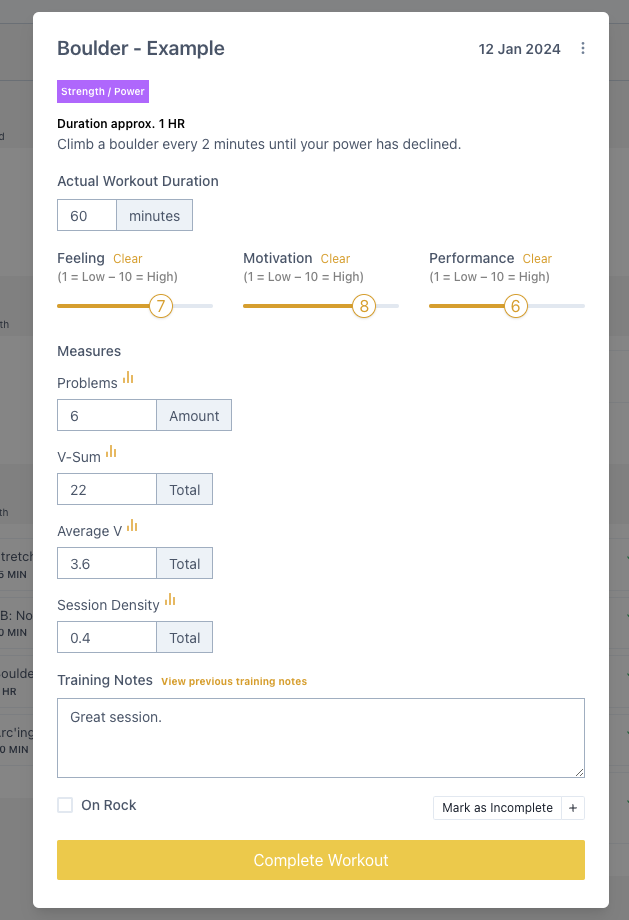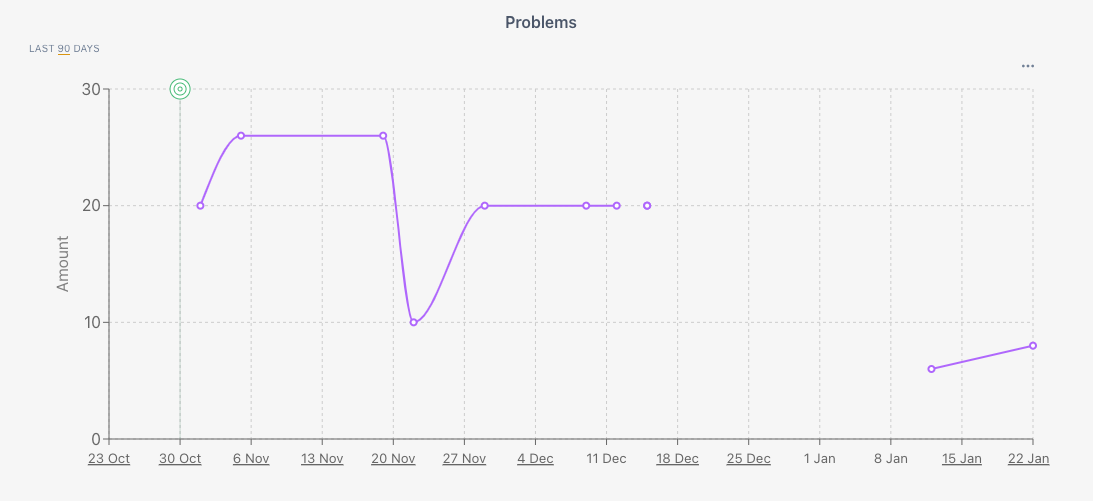Quantifying Bouldering


If you are a seasoned “trainer” or just getting into training for climbing you have probably thought about how to quantify your sessions.
Within the climbing space the Rated Perceived Exertion (RPE) scale is one of the most popular and is used to measure how hard your body works during the session. The RPE scale can help you manage exercise intensity for a given period. I highly recommend looking into it but for bouldering sessions we can track some specific measurements to help guide us a little more. Steve Bechtel proposed this idea in 2019 with this article. In this post I'm going to recap what Steve said and I’ll also share a dedicated Sequence bouldering workout you can copy and use in your account today.
So what do we want to track?
- V-Sum. All the grades of the boulders added up.
- Total Problems (don't include your warm up).
- Average V. V-Sum divided by the number of problems.
- Session Density. V-Sum divided by the duration (minutes) of the session.
Example
- V-Sum - V3, V3, V4, V4, V5, V3 = 22.
- Total Problems - 6
- Average V - 22 ÷ 6 = 3.6
- Session Density - 22 ÷ 45min = 0.4
Notes
- V0 problems should be counted at V1.
- Tracking the Average V and Session Density to one decimal place is a good idea.
Keeping track of the above metrics during your bouldering session will give you the ability to track progress, regression and plan your training load.
If any of the metrics are higher than the previous session, it indicates a higher session load.
Increase Power/Strength - Average V is the most important. This indicates session intensity.
Increase Power Endurance - Session Density is the most important. This indicates how dense your session is.
Increase Capacity - V-Sum is the most important. This indicates how much work you did.
Quantifying bouldering sessions isn’t easy but hopefully these simple calculations help you gain more insights into your training and help you improve.
When planning your sessions I would highly recommend only changing one variable at a time (number of problems, intensity of problems or duration). Increasing all aspects of the session has a higher risk injury.
Setting This Up In Sequence
The cool thing with Sequence is that we can implement the above in a dedicated workout with a few custom widgets and every time we complete this session we will be able to gather feedback instantly and hopefully inform us on making better training decisions.
To save you time I have gone ahead a created an example workout you can import straight into your Sequence account.
And you'll now start getting dedicated graphs automatically for each of the measurements (Problems, V-Sum, Average V, Session Density) you are recording in the metrics section of the app.
Happy bouldering!

